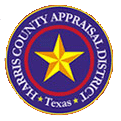
The property tax is the primary source of local government revenue in Texas, and it is important for property owners to understand how the process operates.
1. The appraisal process. An appraisal district in each county determines the January 1 market value of all taxable property, and the property is appraised at that value unless it is a residence homestead subject to a cap. Capped homesteads are limited to increases in appraised value of 10% each year. Once a property's appraised and market values are equal, further increases (or decreases) in value will depend on the market in that neighborhood. In both 2004 and 2005, the market value of over 360,000 residences in Harris County didn't change from their value in the prior year. The appraisal process allocates the tax burden to ensure that no one property pays more or less than its fair share.
2. The tax rate. The governing bodies of the various local government jurisdictions (county, school districts, cities, municipal utility districts, college districts, hospital districts, etc.) set an annual tax rate which, when applied to the total appraised value of all taxable property within that unit, generates the amount of money needed to fund that governmental unit's operations for the year.
Whenever a local government sets a property tax rate, it must comply with Article VIII, Sec. 21(a) of the Texas Constitution, which provides:
a) Subject to any exceptions prescribed by general law, the total amount of property taxes imposed by a political subdivision in any year may not exceed the total amount of property taxes imposed by that subdivision in the preceding year unless the governing body of the subdivision gives notice of its intent to consider an increase in taxes and holds a public hearing on the proposed increase before it increases those total taxes. The legislature shall prescribe by law the form, content, timing, and methods of giving the notice and the rules for the conduct of the hearing.
In short, the Texas Constitution defines an increase in local tax revenues as an increase in taxes, and it requires the local governing body to give notice that it is considering such an increase and hold a public hearing. The legislature determines how and in what form the notice is given. Sec. 21(b) goes on to provide that certain revenue changes � those resulting from new construction, new exemptions, or annexation or deannexation � are not counted in determining whether revenues have increased. In the last legislative session, the legislature changed several elements of the process including adding a requirement that the ordinance adopting the tax rate must state whether an increase in maintenance and operations revenues is being made, but the process is not materially different from what has been the law since the late 1970's.
Taxes are calculated by multiplying a property's taxable value by a tax rate. The value of the property is determined by the market�what that property would likely sell for on January 1 of the year. As noted previously, each taxing entity's governing body determines the tax rate. The constitution requires the appraisal district to set the value, without regard to the effect that the valuation will have on revenues. Then it is up to the taxing entities. Their action in setting the tax rate determines the total tax burden that citizens will have to bear. They can adopt a rate that increases that total burden, decreases it, or leaves it the same. Once they have done that, the property's value determines what proportion of that total burden each individual will pay. If individual value changes from year to year, the taxpayer's portion of the total relative to everyone else will change. But if the governing body chooses to grow the total, then everyone's share grows as well.
There are things that property owners can do at the appraisal district to ensure that their appraisal is fair and that their share of the tax burden is no higher than it needs to be. Taking advantage of the homestead exemption is the principal thing a homeowner can do. In addition, property owners can protest their value to the appraisal review board if they believe it to be incorrect. Questions regarding tax rates, on the other hand, should be directed to the elected governing bodies of the jurisdictions in which your property is located.
The Harris County Appraisal District is committed to making the valuation process as fair and as accurate as we possibly can. However, it is important for property owners to understand that HCAD has no control over the tax rates that individual jurisdictions set.
Jim Robinson
Chief Appraiser
Are you paying too much?
Property taxes are levied on a percentage of value per $100 valuation established by property tax district. Taxes are due on
January 1st of each year ; invoices are sent in November. Values can be protested and the protest application must be made by April 1st of each year.
Exemptions from taxes are given for homestead, over-65, and disability. Such exemptions are available to owners living in the property as of January
1st.